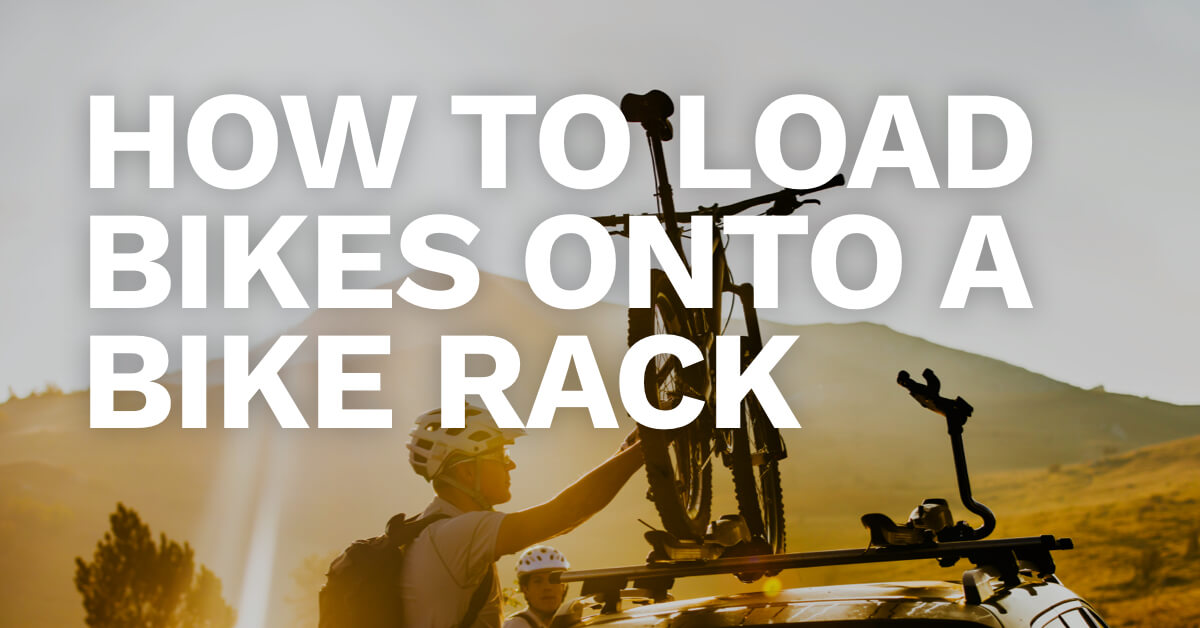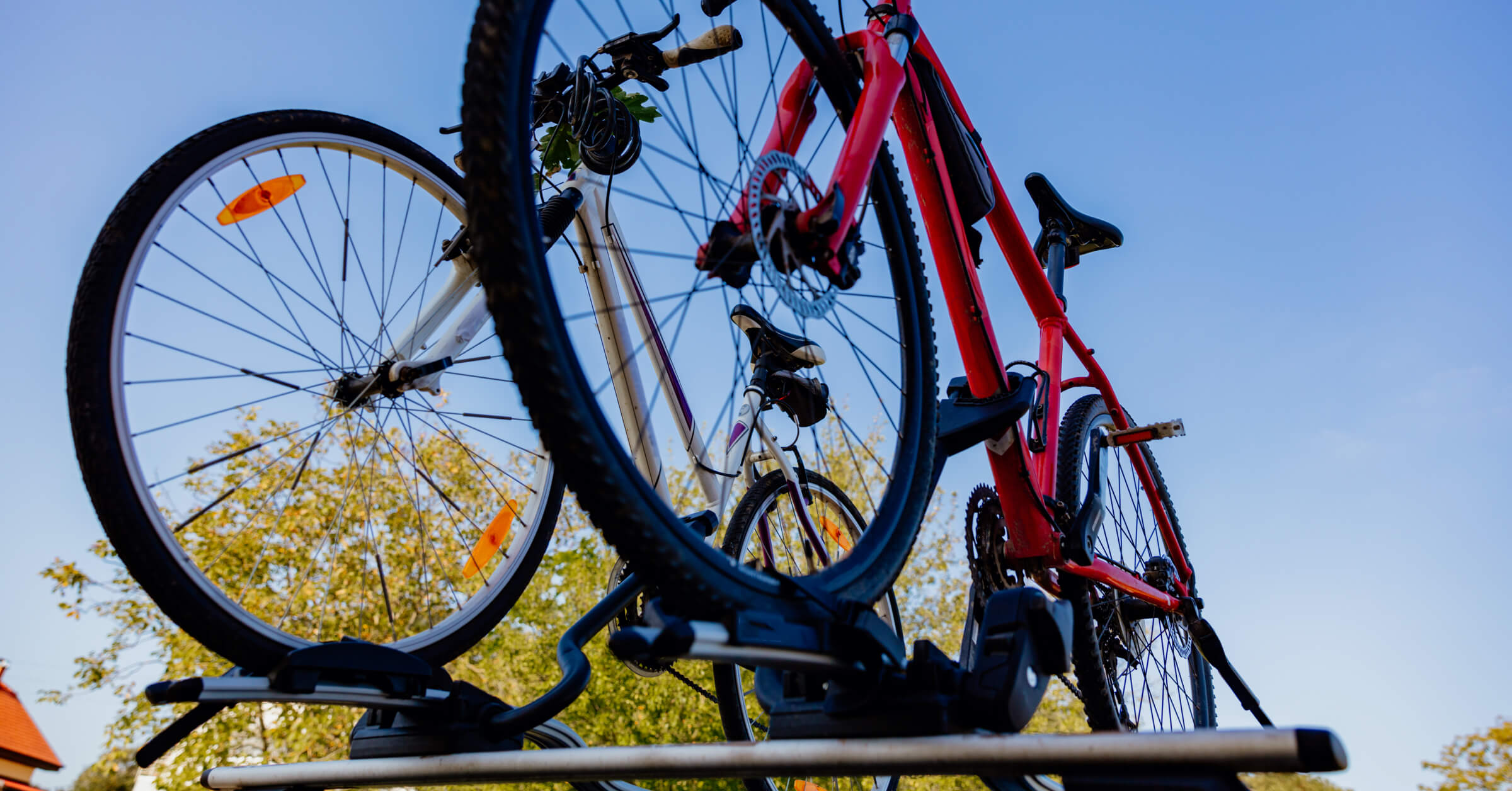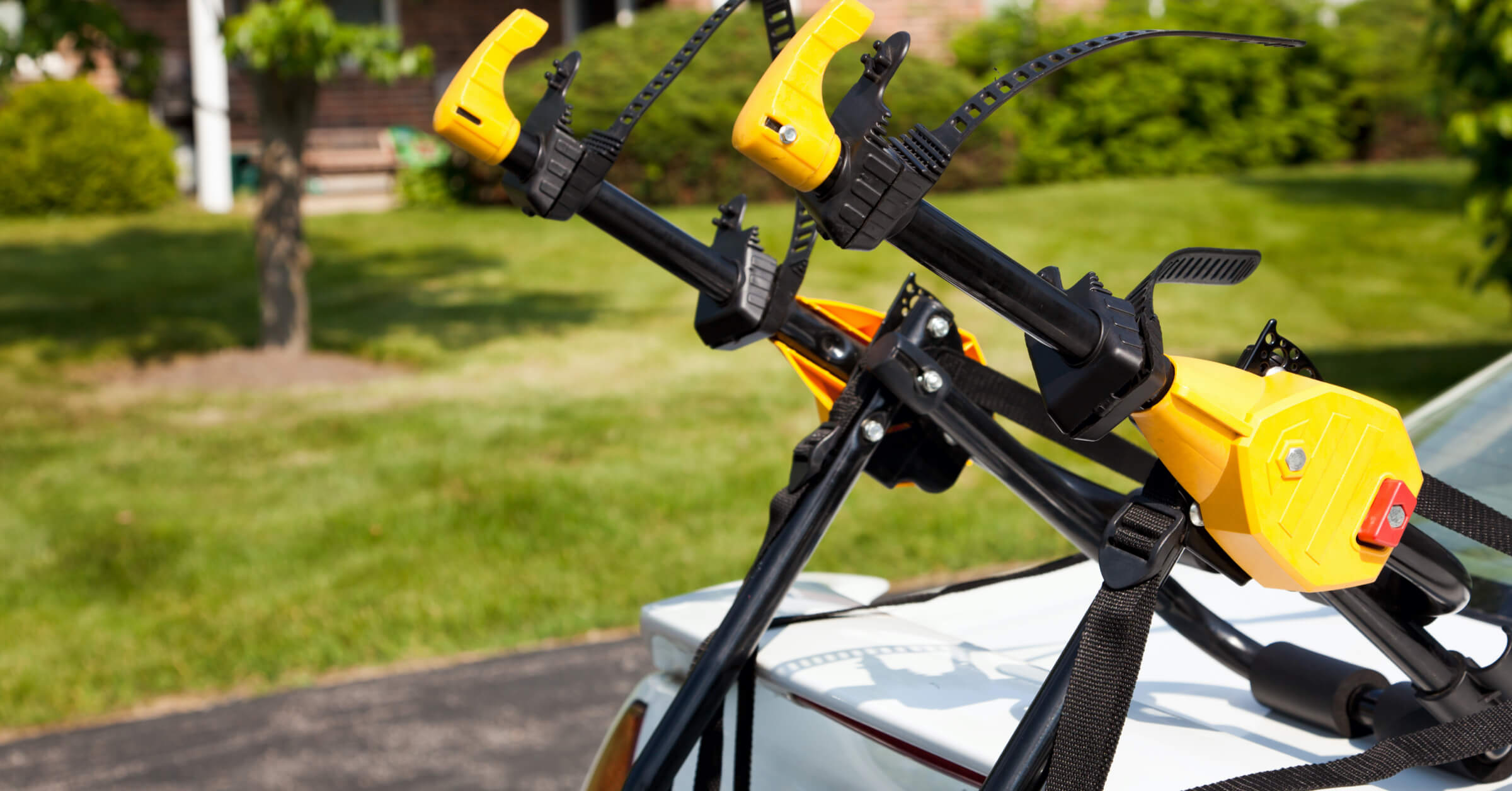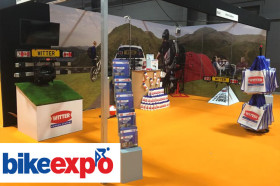
How to Load Bikes onto a Bike Rack
So, your bikes are ready to go, you've bought your bike rack, now you just need to load your bikes safely and make sure they are securely fastened. However, every bike rack is different so there are different ways of loading them. Depending on what bike rack you have, you should follow the fitting instructions you received with the rack and install it securely before loading your bikes.
In this guide, you will learn how to put bikes on a bike rack securely so you don't damage your bikes or your car. We will cover:
- How to put a bike rack on a car
- Loading bikes onto a towbar-mounted bike carrier
- Loading bikes onto a roof bike rack
- Loading bikes onto a boot bike rack
- Loading bikes into a car boot
- How to fit a bike rack
- How to install and load a ZX300 bike rack
- How to install and load a Witter Pure Instinct bike rack
- How to install and load Westfalia bike rack
- How to load standard and e-bikes securely
- Things to remember
How to put a bike rack on a car
There are three main types of bike racks available that are each installed in different ways. This includes a towbar-mounted bike rack, a roof-mounted bike rack and a boot-mounted bike rack. So, when it comes to installing the bike rack onto your car, it all depends on which bike rack you have.
Towbar-mounted bike racks are clamped onto the towball and either have a platform for the bikes to sit on or arms for the bikes to be hung from. Roof bike racks require you to install roof bars, and the roof rack, and secure everything in place before loading the bikes. Boot bike racks are fitted by lining the bike rack up with the boot of the car and attaching it to the boot using a series of straps. It is always important to follow the manufacturer's instructions when installing your bike rack.
Loading bikes onto a towbar-mounted bike carrier
Towbar bike racks can be the easiest to mount your bikes onto your bike rack so if you don't want to lift your bike too high up, they are perfect. Most towbar-mounted platform bike racks have the option of tilting forwards so you can still access the boot while the bikes are loaded.
The important thing to remember is to load the heaviest bike first, ensuring your number plate is always visible and, if needed, use any accessories that might make loading easier. This might mean using a drive-up ramp to get your bikes onto the platform carrier.
- Secure your bike rack onto your towbar, connect the electrics and unfold the platform ready to load your bikes
- Extend the arm clamps and make sure the wheel straps are unfastened
- Starting with the heaviest bike, lift it into position or use a drive-up ramp and load this bike closest to the vehicle
- Secure the arm clamp onto the bike frame and fix the wheel in place by tightening the strap around the wheel once it is in the wheel mount
- Continue to load any additional bikes in alternating directions, leaving the lightest bike until last, and secure all bikes in place as detailed above
- Once you have loaded all of your bikes, most towbar platform carriers allow you to lock each bike individually for theft prevention. So, before you drive off, lock each of your bikes in place to ensure they can not be stolen from the back of your vehicle once you are on the road.
Once you have loaded all of your bikes, most towbar platform carriers allow you to lock each bike individually. So, before you drive off, lock each of your bikes in place to ensure they can not be stolen from the back of your vehicle once you are on the road.
Loading bikes onto a roof bike rack
If you know you need to access bulky items in the boot, even when your bikes are loaded, you absolutely cannot go wrong with a roof bike rack. Because the bikes are mounted on the roof, the boot is completely clear for access but they can be a bit trickier to load.
First of all, you will need roof bars to mount your bike rack onto and a safe, convenient way to access the roof. This might mean using a step ladder and also having someone to help you lift bikes up to the roof rack.
- Once the roof mounting bike carrier is installed, you are ready to put a bike on the rack
- Pull the wheel support frame into place until it clicks, so you know it is locked in and ready to carry bikes
- So you don't fall or damage your car, use a step ladder so you can reach the roof rack with ease
- Once you are standing on the step ladder next to your car, get someone to pass the first bike to you so you can lift it onto the roof. Fit the bike into the wheel holds on the rack and secure them in place with the straps
- If you have frame clamps, tighten these around the top tube of the bike and lock them in place with the key to prevent theft
- Repeat these steps for each bike you mount onto the car roof

Loading bikes onto a boot bike rack
Boot bike racks are often the cheapest and easiest way to carry a bike on a bike rack if you don't have a towbar or roof bars. Boot-mounted carriers are easy to mount onto most cars, of any size, and your bikes will hang from the arms of the bike rack.
- First, you will need to attach the bike rack to the boot of your car and tighten the straps so the rack is secure on your car. This may take some practice as there are often a few straps that need attaching to your boot so you might want to try fitting your bike rack a few times before heading out with your bikes.
- Once the bike rack is secured in place, lift the bike so the arms of the rack slide beneath the crossbar, loading the heaviest bike first
- Secure the bike in place with arm clamps or straps so it doesn't move
- Load additional bikes in alternating directions so the handlebars don't crash into each other
- Ensure your number plate is visible and you can see out of your rearview mirror

Loading bikes into a car boot
If you do not have the funds to purchase a bike rack or it is impractical for you to use a bike rack, you may need to load your bikes into the car boot or onto the back seat. Unless you own a folding bike, this will likely involve taking the bike apart and, depending on the size of your boot, you may need to lower the back seats.
- If you have a relatively small car with a small boot, start by folding down your back seats to maximise the space and line the boot and back seat with an old sheet or newspaper
- Put your bike in the lowest gear possible and remove the back and front wheels so you're left with a compact bike frame
- If your bike has disc brakes, be sure to stick on disc brake plugs to avoid messing with the alignment of your brake calipers
- Load the bike in 'dry' side up. This means the side with the chain, derailleurs and brakes should be facing upwards so no unnecessary pressure is placed on them
- Load the wheels into the boot and position them so they cushion parts the bike frame that are more likely to move or rock
- Cover the pedals with a rag or old newspaper so the studs don't cause any damage to your car
How to fit a bike rack
Every bike rack varies which means they all need to be installed differently. Whether you opt for a rear bike rack, a towbar-mounted bike rack, or a roof-mounted bike rack, the installation process varies.
The best bike rack for your needs will change depending on different factors such as:
- The type of vehicle you own
- The number of bikes you intend to carry
- Your bike rack budget
Fortunately, there is an array of options, ensuring you can find a suitable bike rack that aligns with your specific preferences and requirements.
Regardless of your choice, the most important part of installation is to make sure your bikes are securely and safely mounted, so, let's have a look at each different bike rack, and how to fit them.
How to load a towbar-mounted bike rack
Towbar-mounted bike racks are fitted to the towbar of your car so, of course, you will need a towbar to use this type of bike rack.
- Make sure the towball is clean and not greasy
- Open the towball clamp on the bike rack and slot into place
- Connect electric plugs from the bike rack to the towbar electrics
- Pull on the back frame and open out the light board
- Load bikes and strap them in
- Load the heaviest bike first and alternate the way you load the bikes as you load each one
How to load a roof bike rack
Roof bike racks are fitted to the roof of your vehicle, you will need crossbars installed on your roof before you get started.
- Install roof bars and give them a clean
- Install spacer, bolts and metal base onto wheel tray
- Attach metal stands
- Pull straps through the wheel stoppers and tighten around the crossbars
- Attach caps to each end of the bar and slide carriage bolts through the rack
- Mount the bike rack onto the crossbars
- Put a metal base plate under crossbars and carriage bolts, screwing bolts using a spacer
- Put U-bolt in place on either side of the bar and secure spacers and nuts
- Mount your bike onto the rack pulling straps to secure it
How to load a boot bike rack
Boot bike racks don't need a towbar or roof rack installed on your vehicle, and are also suitable for smaller cars.
- Line bike rack in the centre of your boot
- Release straps on bike rack and use the hooked end on each corner
- Tighten straps one by one
- Pull the arms on the bike rack out straight
- Attach strap to each bike mount
- Load bikes and tie the top and bottom of the wheels to the bike rack
As each bike rack differs, you may be wondering which bike rack is the best for your situation, but don't worry.
Learn more about how to fit a bike rack here.
How to install and load a ZX300 bike rack
The ZX300 cycle carrier is superbly designed to make operation and installation as simple as possible. But to ensure safety, and to avoid any damage to your vehicle or bikes, we're going to run through the installation procedure.
- Make sure the towball is clean and full of grease.
- Lift the clamp lever on the bike rack by turning the key anticlockwise and hold til the lever is released.
- Make sure the main cycle platform is level before closing the lever.
- Loosen the knobs on the mounting bracket, then flip up the mounting bracket and tighten the knobs.
- Attach and tension the support straps.
- Attach the hooks to the tailgate/boot and make sure this position is stable and strong.
- Fit a protective cap onto one of the plugs then attach the plug using the 7 or 13 pin electrical connection.
- Ensure the plug is fully inserted and the cable cannot touch the floor.
- Time to load your bikes. Start with the heaviest first, closest to the vehicle.
- Make sure the fixing arm is attached to the bike support frame at one end and the bike frame at the other.
- Secure wheels into wheel locators by feeding the ratchet strap into the buckle and pulling it tight.
- For the second bike, repeat the process on the second set of wheel locators.
- For extra safety, mount and fasten the anchoring belt to the whole load.
If you need to access your boot at any time, you can. Just loosen the straps and unhook them from the vehicle. Whilst holding the weight of the carrier, pull the red release handle. To close the cycle carrier, lift it until the red release handle and mechanism click back into position.
Learn more about how to install and load a ZX300 bike rack here.
How to install and load a Witter Pure Instinct bike rack
The Witter Pure Instinct bike rack makes installation as simple as possible. Let's run through the installation procedure so we can be sure to avoid any unnecessary damage to your vehicle, or your bikes whilst in transit.
- Make sure the towball is clean and full of grease.
- Lift the clamp lever on the bike rack by turning the key anticlockwise and hold until the lever is released.
- Make sure the main bike platform is level before closing the lever.
- Check the tow ball locator is secured to the hitch ball.
- Flip up themounting bracket using the handle, fold out wheel supports until they lock.
- Attach support strap brackets then secure the support strap hooks.
- Attach plug to the vehicle.
- Fold out both light clusters, turn knobs to secure.
- Time to load your bikes. Start with the heaviest first, closest to the vehicle.
- Make sure the fixing arm is attached to the bike support frame at one end and the bike frame at the other.
- For the second bike, repeat the process on the second set of wheel locators.
- For extra safety, mount and fasten the anchoring belt to the whole load.
Just like the ZX300 bike rack, if you need to access your boot at any time you can. Just loosen the straps and unhook them from the vehicle. Whilst holding the weight of the carrier, pull the red release handle. To close the cycle carrier, lift it until the red release handle and mechanism click back into position.
Learn more about how to install a Witter Pure Instinct Bike Rack here.
How to install and load a Westfalia bike rack
Westfalia bike racks are designed to transport your bikes as safely and securely as possible. To avoid damage to your vehicle, or your bikes whilst they are being transported, we're going to run through the installation procedure.
- Make sure the towball is clean and full of grease.
- Place the bike rack on the towbar aligned correctly horizontally and vertically.
- Push the clamping lever until it engages. Lock the lever and pull out the key.
- Put the plug into the connection on the towing hitch and rotate it clockwise.
- Loosen the two knobs for the mounting bracket, then flip and tighten the knobs.
- Fold out both light clusters and pull out wheel supports.
- Now load the bikes. Release the straps on wheel holders, put the bike onto the wheel rails and push wheel supports up to it.
- Open the bicycle clamp by rotating the tommy nut. Press the bike clamp together to open the bracket clamp.
- Attach the mounting bracket clamp onto the A-frame.
- Put bicycle clamp around the bike frame and turn the tommy nut to tighten. Use the key to lock the clamp.
- Wrap wheel straps through tires and secure.
- For the second bike, sit the bike in the opposite direction and attach using the same procedure.
If you need to access the boot, pull the lock upwards. Then whilst holding the weight of the carrier with one hand, squeeze the release lever with the other, and pull the carrier towards you. To close the carrier, lift it until it clicks back into place. Simple!
Learn more about how to install a Westfalia bike rack here.
How to load standard and e-bikes securely
If you've recently made the switch to electric bikes, you may also need a bike rack to transport your new ride safely. E-bikes can be far more expensive than their man-powered counterparts, and usually much heavier. That means you need to think about how to transport your e-bikes safely to protect both your bike and your vehicle.
If you're wondering what kind of car bike racks are suitable for safely transporting electric bikes, the good news is that there are several, including:
- Towball mounted
- Towbar mounted
- Roof mounted
- Rear mounted
If you're wondering what the best bike rack is for your electric bike, browse our selection of bike racks for e-bikes that meet the criteria.
Towball-mounted
Towball mounted bike racks are the most popular choice to securely transport electric bikes. They are attached to your vehicle via a bolt-in system or a clamp-down lever, and they're either loaded onto a platform or alternatively hung by their top tubes.
They are a secure way to transport your e-bike as they feature a locking mechanism to fix the bike rack to your vehicle. This decreases the chance of theft or damage during transit.
Towball-mounted racks have a high weight capacity, but make sure you check the weight of your e-bikes as the weight-limit is around 20kg per bike.
Towbar-mounted
Towbar-mounted bike racks for electric bikes are very similar to towball-mounted bike racks. The key difference is that a towbar-mounted bike rack is only compatible with a flange-type towbar. A towbar-mounted bike rack is fixed to the faceplate of your vehicle, rather than bolted to the towball.
Towbar-mounted bike racks support the weight of e-bikes in their entirety, and are a safe and secure option for transporting bikes at the same time as towing a caravan or a trailer.
Roof-mounted
Roof-mounted bike racks for electric bikes are not as popular due to the heavy weight of e-bikes, but are still a safe and secure way to transport bikes. If you want to try a roof-mounted bike rack for your e-bike, we recommend the roof-mounted 1 bike cycle carrier which includes an arm system with an adjustable clutch mechanism to ensure a safe and secure loading procedure.
Rear-mounted
As rear-mounted bike racks for electric bikes are strapped to your vehicle without a towball or roof bars, we wouldn't recommend them if you're planning to transport multiple e-bikes or an e-bike that is exceedingly heavy.
However, if your journey isn't too long, or you have e-bikes that are on the lighter side, we recommend this rear 2-bike carrier with rigid brackets to safely secure your bikes in place.
Learn more about how to transport your e-bikes safely here.
Things to remember
- Load the heaviest bike first so it is closest to the boot or to the centre of the roof
- Lock your bikes into the rack when you have loaded them so you know they are secure
- Use additional tension straps to secure bikes in place if this makes them feel more sturdy and ensure you have the correct tension on the straps to keep the bikes in place
- Alternate the direction you load the bikes in if you are loading more than one so the handlebars don't knock into each other. You may want to use some padding between each bike
- Do not load your bike onto the rack with valuable accessories attached to it. Store these inside your vehicle
- Load your bike once you are ready to leave, not the night before your journey. You should not leave your bikes unattended when they are loaded onto your car
Once you know how to load your bikes safely and securely, you are ready for endless adventures. But, before you hit the road, it is also worth knowing how to pump and change a bike tire as well as the best family bike rides in the UK. That way, you can be well prepared for heading out on your bike armed with a fun cycling route and the knowledge of how to maintain your bike if you do hit a bump in the road.

